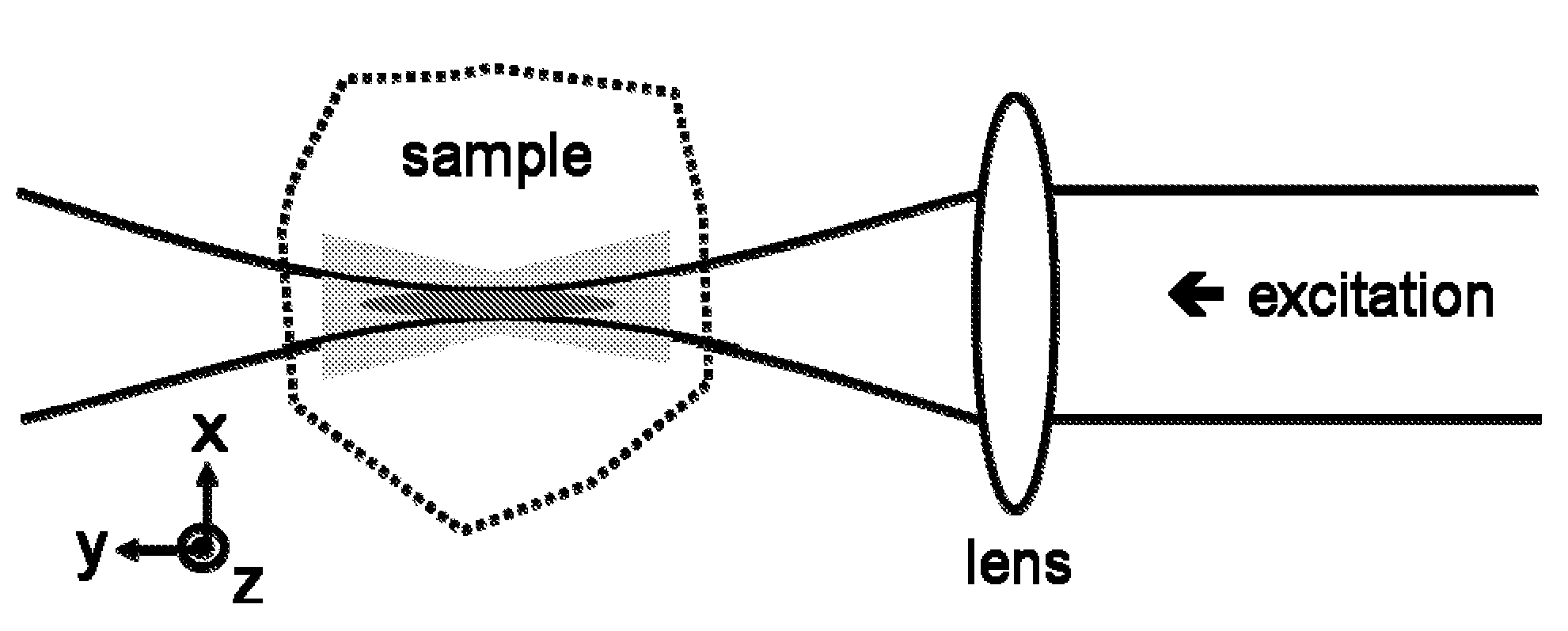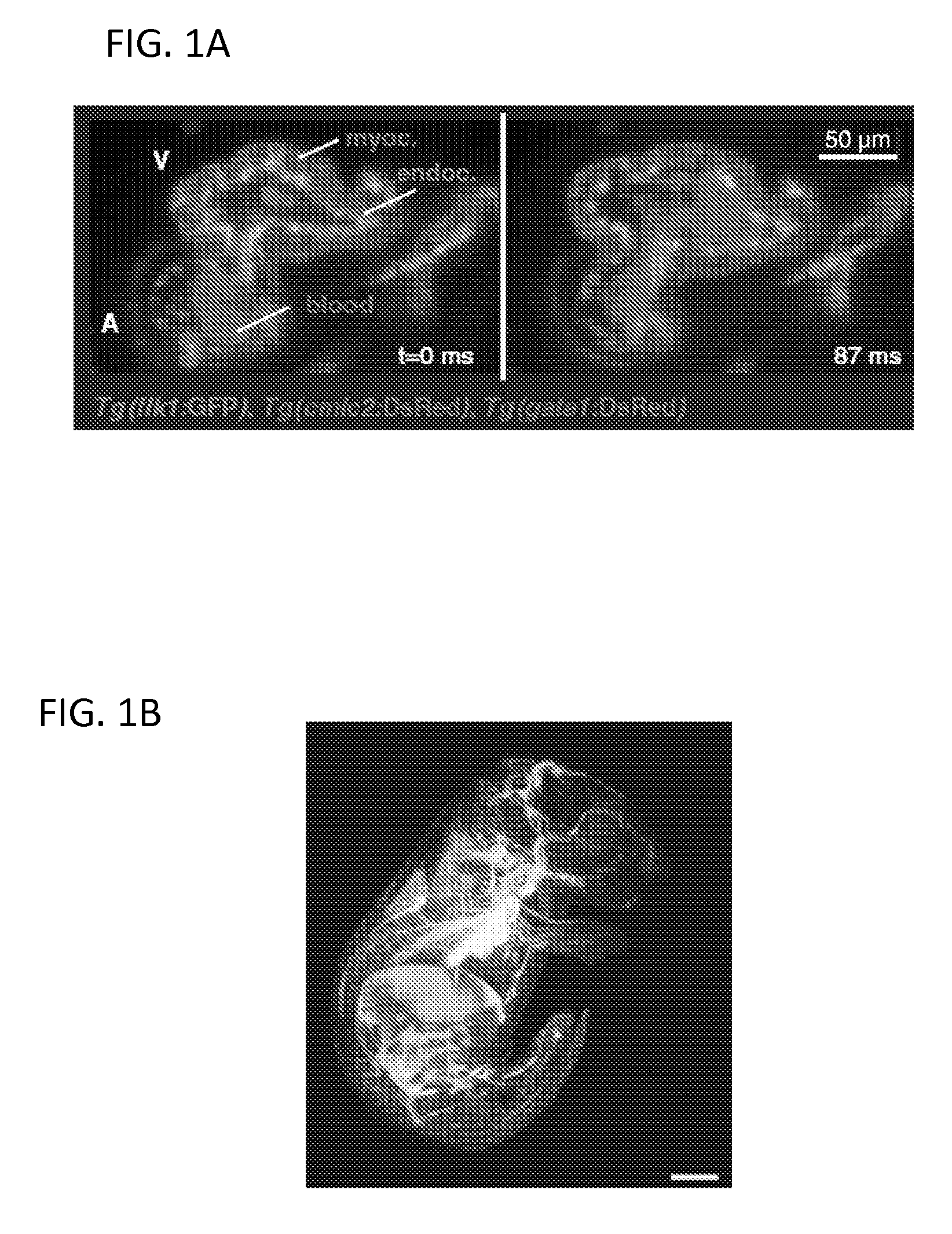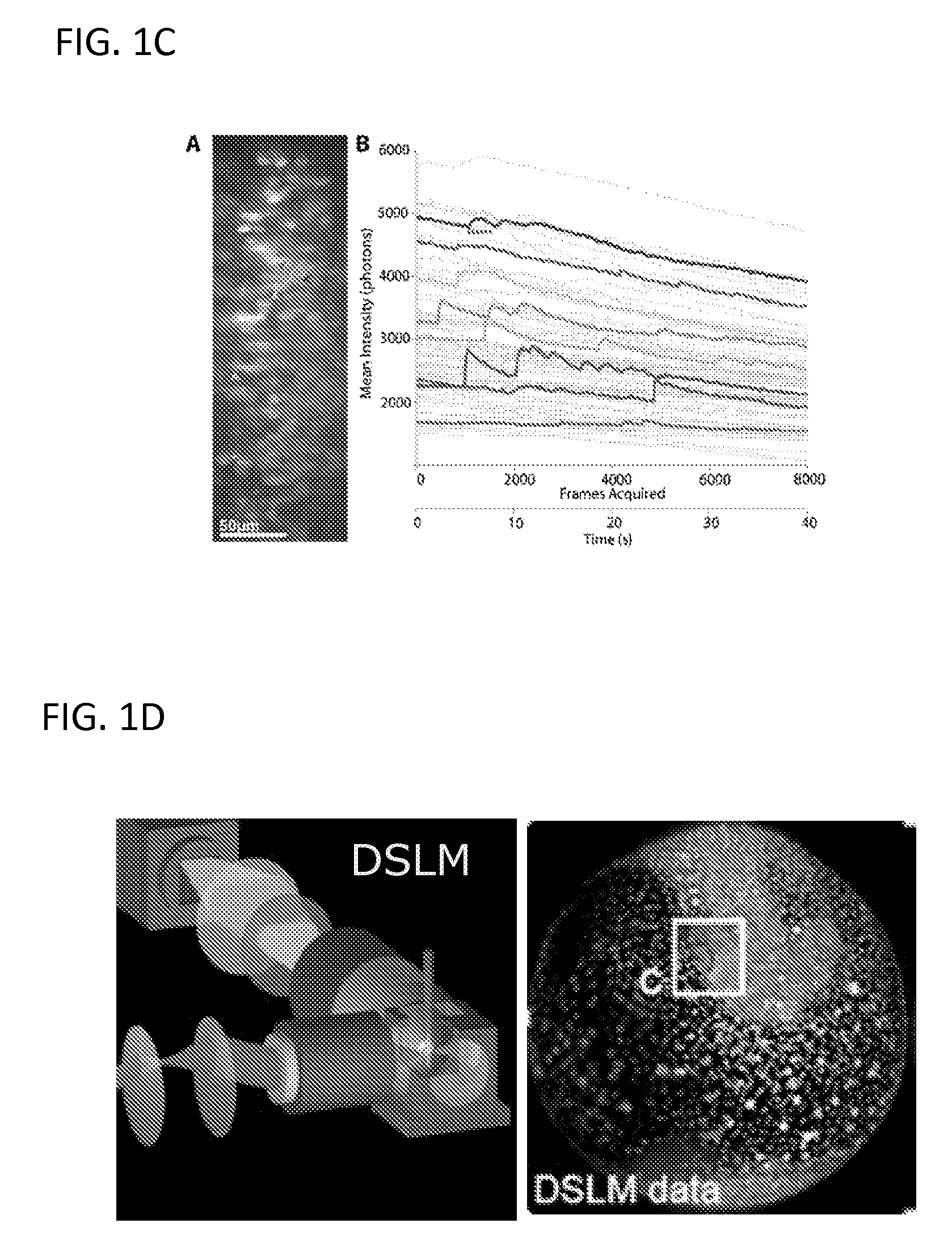Multiple-photon excitation light sheet illumination microscope
a light-sheet illumination and multi-photon excitation technology, applied in the field of multi-photon excitation light-sheet illumination microscopes and microscopy, can solve the problems of high power requirements that are not only beyond, but likely to be higher, and achieve the effects of preserving resolution, superior resolution, and reducing scattering/refraction
- Summary
- Abstract
- Description
- Claims
- Application Information
AI Technical Summary
Problems solved by technology
Method used
Image
Examples
example 1
Depth Penetration / Resolution of MP-LISH (Drosophila Internal Structures)
[0105]With this same initial resolution performance, the three modalities were then compared in imaging live embryos, to see how deep into the scattering sample the resolution and image quality could be maintained, using fluorescently-labeled cell nuclei as test objects. Since the nuclei had size of ˜5 um, for the imaging modalities the initial resolution of ˜1 um laterally and ˜2 um axially was chosen.
[0106]To demonstrate the ability of 2p-LISH to maintain good signal contrast and spatial resolution deep inside biological samples, it was compared to 1p-LISH and 2p-LSM in imaging the internal cells of live, Drosophila embryos at stage 13 (FIG. 7). (In this data, FIGS. 7A, D & G provide yz-slices comparing the cellular resolution of a deep cell (gray arrow), FIGS. 7B, E & H provide the position with this deep cell (gray arrows) is indicated (x-100 μm and z-70 μm) with the embryo viewed from the anterior side, sho...
example 2
Depth Penetration / Resolution of MP-LISH (Drosophila External Structures)
[0110]In addition to the nonlinear excitation, the use of low NA focusing also contributes to the optimized depth penetration of 2p-LISH. This is demonstrated by imaging Drosophila before gastrulation, when all of the cell nuclei are regularly distributed along the surface of the embryo, providing an ideal model for testing the resolution around, rather than into, a biological object (FIG. 8).
[0111]As expected, good spatial resolution is observed in all three techniques when imaging the tissue surface close to the detection objective (ventral side of the embryo: upper part in FIGS. 8A, C, and E). However, on the lateral sides of the embryos (see yz-slices FIGS. 8B, D and F), much improved axial resolution of 2p-LISH is seen compared to the other two techniques. While the cell nuclei can be resolved almost all-around the embryo in 2p-LISH (FIG. 8A-B), they appear elongated in the z-direction and smeared together ...
example 3
Depth Penetration / Resolution of MP-LISH (Zebrafish)
[0113]The improved resolution performance of 2p-LISH is also demonstrated in imaging live zebrafish (Danio rerio) embryos (FIG. 10). The zebrafish is an important vertebrate animal model that, even though is significantly less optically opaque than Drosophila, still presents considerable challenge to 4D imaging, especially at its later stages of embryonic development (beyond the first day after fertilization). (See, Supatto, W., et al., Nature Protocols 4, 1397-1412 (2009), the disclosure of which is incorporated herein by reference.) The comparison of the three techniques for imaging 45 hours-post-fertilization (hpf) zebrafish embryos confirms that 2p-LISH achieves higher depth penetration than 1p-LISH (again by at least a factor of 2), resolving cellular structures within the hindbrain and neural tube that 1p-LISH does not (FIGS. 10A and 10B).
[0114]In particular, the upper panel shows xy-slices through the image z-stacks at depth ...
PUM
 Login to View More
Login to View More Abstract
Description
Claims
Application Information
 Login to View More
Login to View More - R&D
- Intellectual Property
- Life Sciences
- Materials
- Tech Scout
- Unparalleled Data Quality
- Higher Quality Content
- 60% Fewer Hallucinations
Browse by: Latest US Patents, China's latest patents, Technical Efficacy Thesaurus, Application Domain, Technology Topic, Popular Technical Reports.
© 2025 PatSnap. All rights reserved.Legal|Privacy policy|Modern Slavery Act Transparency Statement|Sitemap|About US| Contact US: help@patsnap.com



